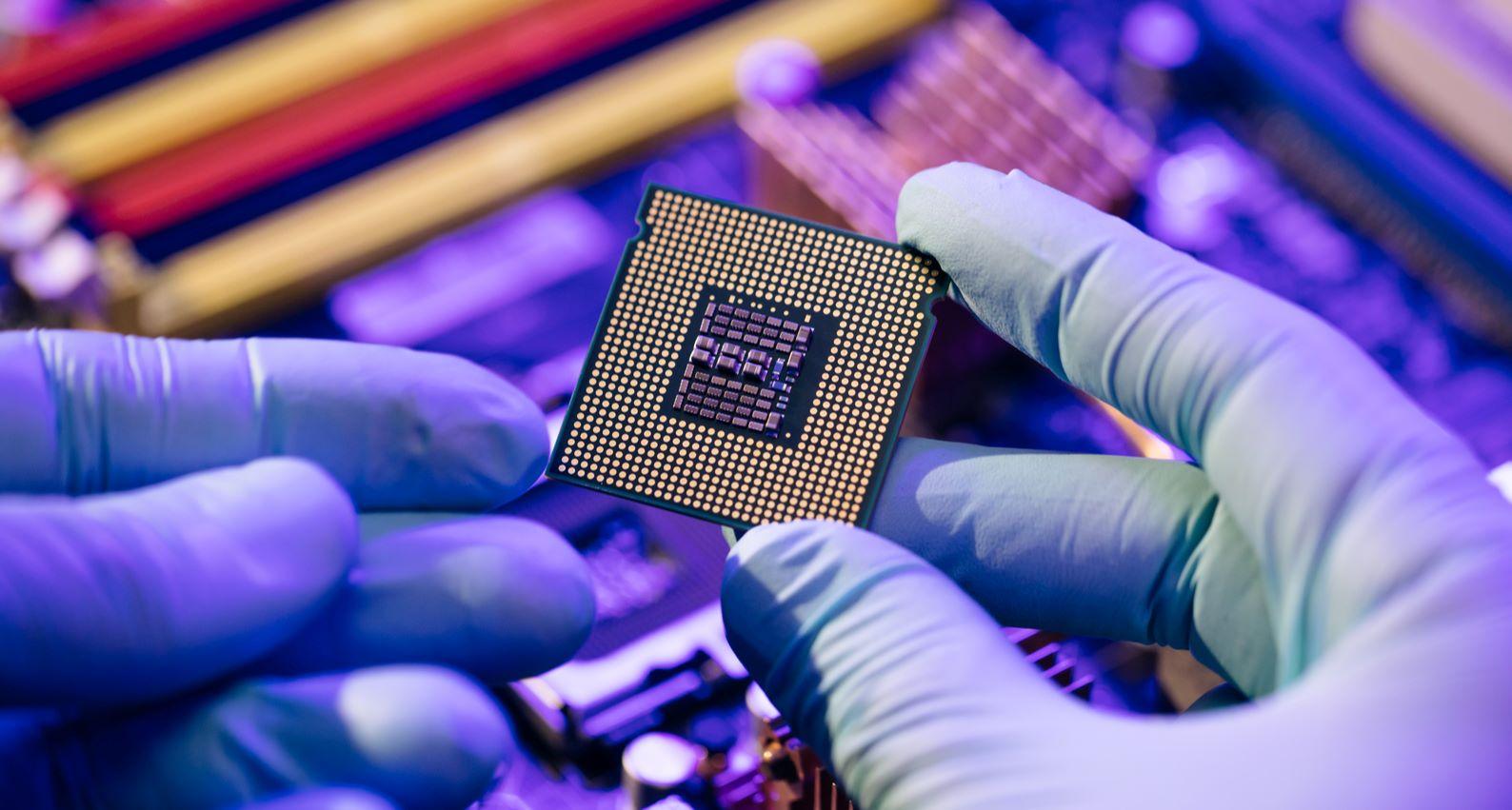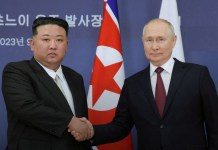With the tardy progress of the so-called “Chip 4 Alliance” comprising the US, Japan, South Korea, and Taiwan to produce “Democratic Chips” and stop China from disrupting the global semiconductor supply chain, the Biden Administration seems to have decided to act alone, hoping others will follow.
Last week, it envisaged new controls on semiconductor sales to China, which, if successful, could disrupt China’s military by blocking access to memory chips and chip-making equipment crucial to modern defense systems like stealth aircraft, satellites, and cruise missiles.
These controls also tightened rules on selling semiconductor manufacturing equipment to companies that produce advanced logic chips in China. In the process, these controls could adversely affect hundreds of Chinese-American tech executives working for American tech companies in China by forcing them to choose between their citizenship and their job.
The new rules bar “US persons, including US citizens and permanent residents, from supporting the “development or production” of advanced chips at Chinese factories without a license.
In other words, the latest US export controls have tightened rules on selling semiconductor manufacturing equipment to companies that produce advanced logic chips in China. According to experts, it is perhaps the first time that export controls in China have extended to people rather than just organizations or companies.
In fact, according to the Wall Street Journal, US chip equipment suppliers have withdrawn dozens of employees with essential expertise and paused business activities at Yangtze Memory Technologies Co. (YMTC), “China’s leading memory chip maker.”
These newest curbs on China, announced last week, came within a month of the US Department of Commerce announcing its plans to “keep advanced technologies out of the wrong hands” by restricting sales of memory chips to China and Russia.
On October 6, none other than President Biden himself told reporters how America invented the chips and had once more than 30% of the global chip production.
“But then something happened: American manufacturing, the backbone of our economy, got hollowed out because companies began to move jobs and production overseas. And as a result, today, we’re down to barely 10% of the world’s chips, despite leading in chip research and design. And as we saw during the pandemic when factories — when factories that make these ships [sic] shut — chips shut down around the world, the global economy, literally, comes to a screeching halt,” he said.
Then, the US President made a significant remark. “More Americans have learned the phrase ‘supply chain’ and what it means. Well, guess what? The supply chain is going to start here and end here — in the United States. I’m not joking”.
It may be noted that the ongoing shortage of chips the world over is mainly due to the disruption of the supply chain in the wake of the Covid pandemic. And in turn, it has badly affected a series of varied industries.
Because semiconductors are critical technology, going into making products ranging from smartphones to cars to artificial intelligence to sophisticated weapons.

But then, the semiconductor supply chain’s range is complex and wide. If one country dominates in designing, another does so in manufacturing, and yet another in packaging.
For instance, the ASML Company of the Netherlands is the only firm in the world capable of making the highly complex machines needed to manufacture the most advanced chips.
Taiwan’s TSMC and South Korea’s Samsung dominate manufacturing the world’s most advanced semiconductors. “Intel” of the United States is a big chipmaker, but it is behind its counterparts in Taiwan and South Korea.
Taiwan and South Korea make up about 80% of the global foundry (facilities that manufacture chips that other companies design). But the catch here is that the branches of the Taiwanese and Korean companies, like many of the United States, are located in the Chinese mainland.
And it so happens that the Chinese mainland is the world’s largest market for semiconductor manufacturing equipment. According to SEMI data, sales of semiconductor equipment in the Chinese mainland reached $29.62 billion last year, up 58% year-on-year, accounting for almost 29 percent of the global semiconductor equipment market.
This global industry association represents the electronics manufacturing and the design supply chain.
By keeping this China factor in mind, the United States mooted the idea of the “Chip 4” initiative last year. It was a part of a US strategy to strengthen its access to vital chips and weaken Chinese involvement on trade and national security grounds.
It was supposed to comprise the US, South Korea, Japan, and Taiwan, offering a forum for governments and companies “to discuss and co-ordinate policies on supply chain security, workforce development, joint research, and development (R&D) projects, and subsidies (The CHIPS Act provides a $270 billion incentive package to the chip industry, colleges, and universities, and research partnerships to revitalize chip manufacturing in the US).”
But no concrete plans of action on how to go forward have been made even though a year has passed.
At the political level, the heads of the government in South Korea, Japan, and Taiwan all agree with President Biden on the alliance. Taiwanese President Tsai Ing-wen told the visiting governor of the US state of Arizona, Doug Ducey, in August that Taiwan looked forward to producing “democracy chips” with the United States and its TSMC, a major “Apple” supplier and the world’s largest contract chipmaker, was constructing a $12 billion plant in Arizona.
However, the problem is the pressure from the major companies on their respective governments, which have very high stakes in China, to go slow. So much so that even a preparatory meeting of the Chip-4 countries was delayed for nearly a year.
Apparently, with great hesitation, South Korea and Japan agreed to participate in a US-designed and hosted first meeting of the Chip-4 “working group” on September 30. The meeting occurred at the American Institute in Taiwan, its de facto embassy.
But not much information on its outcome is available except for Taiwan Economy Minister Wang Mei-hua Wang told reporters in Taipei, “We exchanged views at a first preliminary meeting, and hope everyone can discuss how to collaborate in the future on supply chain problems like the ones we recently encountered.”
And when one talks of industries’ pressure on the governments, these include even the American ones. According to a Reuters report, the United States’ newest export curbs on China have also introduced “unintended consequences” that could affect everyone waiting for the global chip supply to stabilize.
By requiring US firms to halt operations and preventing foreign chip technology firms based in China from exporting products, the US could further delay shipments and disrupt the global supply chain, as well as US access to memory chips.
Besides, while the US export curbs could work to keep memory chips out of China without other nations joining the US in similar export curbs, an official told Reuters, “the unilateral controls we’re putting into place will lose effectiveness over time.”
Similarly, it remains to be seen how Taiwan’s economy can decouple from its biggest trade partner, China. For instance, in 2021, China accounted for 28.21% of Taiwan’s total exports by value.
Integrated circuits, also known as chips, accounted for 62% of the island’s exports to the mainland last year, with the value reaching US$155 billion, according to China Customs figures. And in the first half of this year, the mainland imported US$79 billion of chips from Taiwan.
Even Taiwan’s largest importer has been mainland China since 2014, with a total of 21.62% of Taiwan’s imports in 2021, by value, coming from the mainland. If Taiwan has to go by the US restrictions, then TSMC, which has two fabs in China – at TSMC’s Nanjing fab, 16–nm and 28–nm chips are produced – has to suffer greatly. As it is, TSMC has plans for future expansion or forward development in the Nanjing production process.
Having such a tight-knit economic relationship, it is but natural that Taiwan’s government will safeguard the interest of its homegrown semiconductor companies while dealing with concerns about the potential impact of a US-led chip alliance on Taiwanese tech industries.
South Korea’s situation is also similar to that of Taiwan. China happens to be South Korea’s biggest trade partner. South Korea’s exports to China accounted for about 25% of its total exports, while its exports to the US totaled about 15% in 2021.
China is also the country’s largest source of imports. Therefore, the US policy discouraging Chinese participation in supply chains “has immediate detrimental implications for Korean manufacturers,” a recent report by the US-based Peterson Institute for International Economics has warned.
“Joining the Chip 4 alliance is a significant risk for South Korea as any moves to restrict chip sales to and investment into China risks triggering a trade war—with China seeing South Korean goods, regardless of sector, being boycotted,” according to Matthew Bey, a senior global analyst for RANE Risk Intelligence, a geopolitical business consultancy.
Incidentally, Samsung Electronics, which has invested heavily in two NAND factories in Xian, China, is producing advanced 3D NAND products. South Korean company’s Xian factories reportedly account for more than 40% of Samsung’s NAND FLASH total production.
Secondly, it is not only a question of a relationship with China but also the presence of inter-rivalries among the industries of the potential Chip 4 partners. Korean companies like Samsung do not want to share their trade secrets with Taiwanese peers like TSMC.
Samsung Foundry is concerned that its technologies, like materials or transistor designs, could be used by rivals TSMC or Intel, which would instead not share its knowledge with the competition. Samsung Memory is reportedly not keen on joining hands with Japanese companies like Tokyo Electron and Nikon. The vice versa is equally valid.
Besides, there are political issues within Chip 4. Japan and South Korea still have to settle their historical animosities, making their governments reluctant to convince their industries to join hands sufficiently.
Politically, there is another tricky problem among Chip 4. And that is making Taiwan a formal partner in an international alliance. The US, Japan, and South Korea follow a one-China policy. How to grant Taiwan, not a de jure sovereign country, equal status in an intergovernmental forum is a big question, particularly among Japanese and Korean critics.
The biggest challenge to the Chip 4 initiative is the “internal conflict” among the would-be partners. Until its resolution, the initiative is unlikely to proceed beyond the idea stage. And that explains why the Biden Administration has decided to proceed solo in targeting China’s chip-making capacity.
- Author and veteran journalist Prakash Nanda has been commenting on politics, foreign policy on strategic affairs for nearly three decades. A former National Fellow of the Indian Council for Historical Research and recipient of the Seoul Peace Prize Scholarship, he is also a Distinguished Fellow at the Institute of Peace and Conflict Studies.
- CONTACT: prakash.nanda@hotmail.com
- Follow EurAsian Times on Google News




